#Hiroshige Utagawa III
Text

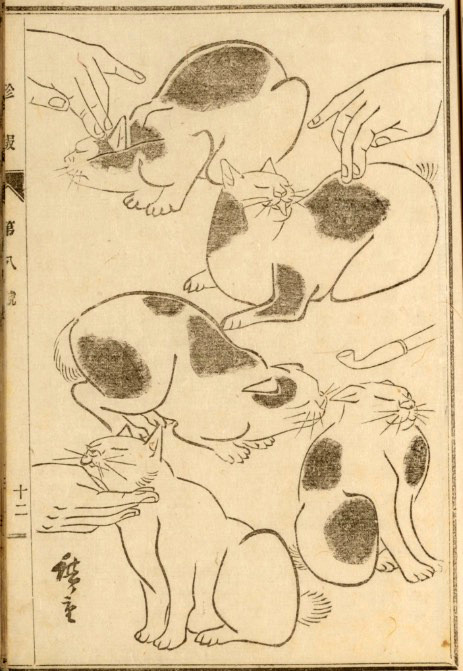


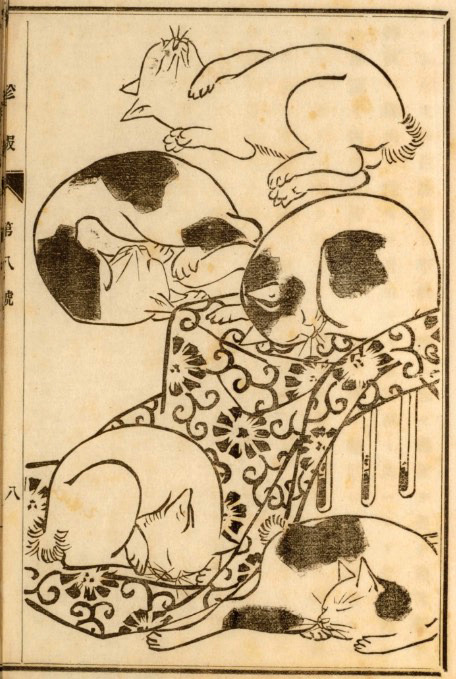
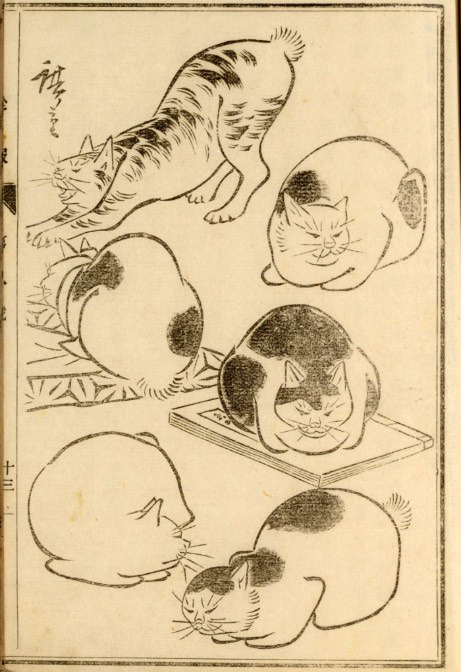
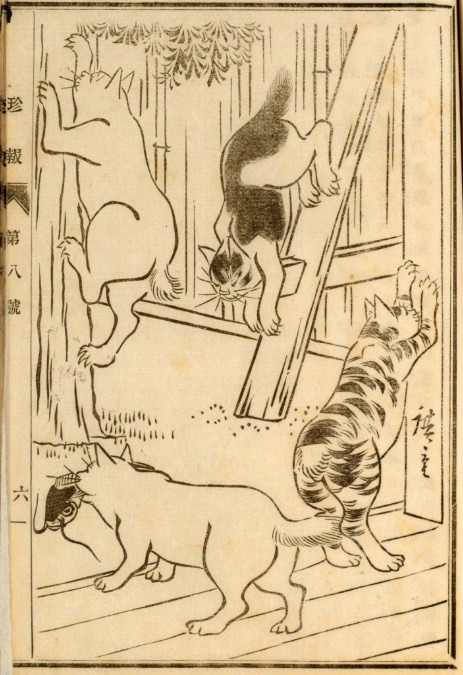



Hiroshige Utagawa III ( Andō Tokubei (安藤徳兵).)
100 cats
"Hyakuneko Gafu"
Meiji Period
#utagawa hiroshige#hiroshige III#Hiroshige Utagawa III#japanese art#books#cats#ukiyoe#Andō Tokubei (安藤徳兵)#ando hiroshige
2K notes
·
View notes
Text
More for #ILoveHorsesDay ❤️🐴:


Horses, a New Publication (Shimpan uma zukushi)
Color woodblock prints
c.1847-8 by Utagawa Hiroshige II (Japan, 1826–1869), 377x257mm
1874 by Utagawa Kunisada III (Japan, 1848–1920), 337x225mm
Legion of Honor Museum 1963.30.1472, 1963.30.5519
#animals in art#animal holiday#19th century art#Legion of Honor Museum#Japanese art#East Asian art#Asian art#horse#horses#I Love Horses Day#domesticated animals#print#woodblock print#Utagawa Hiroshige II#Utagawa Kunisada II#ukiyoe
75 notes
·
View notes
Text

Utagawa Hiroshige III
Flying Cranes
ca. 1860-70s
#utagawa hiroshige#woodcut#japanese woodblock print#japanese prints#art history#japanese art#asian art#japanese aesthetic#asian aesthetic#tumblrpictures#tumblrpic#tumblraesthetic#aesthetictumblr#tumblrstyle#tumblrposts#tumblrlove#birds#birdwatching#beautiful birds
328 notes
·
View notes
Photo

Bird Flying Over Chinese Bellflowers and Wild Pinks by Utagawa Hiroshige III (1860′s)
#utagawa hiroshige#art#ukiyo-e#woodblock prints#fine art#19th century#19th century art#woodblock print#edo period#edo era#japanese art#japanese artist#nature art#flowers#bellflower#wild pink#birds#asian art#classic art
412 notes
·
View notes
Text






five ukiyo-e ink brush drawings on paper
The ukiyo-e ("pictures of the floating world") genre of art flourished in Japan from the 17th through 19th centuries. Ukiyo-e artists produced woodblock prints and paintings depicting samurai, beautiful courtesans, kabuki actors, sumo wrestlers, history, folk tales, travel in romantic landscapes, flora, fauna and erotica. The Floating World, as the pleasure districts of Edo (modern day Tokyo) were called, describes the sensory pleasures of urban life, but also offers a bittersweet reminder of the fleeting nature of all worldly delights. Some of the greatest Japanese artists of the time—Ando Hiroshige, Katsushika Hokusai, Utagawa Toyokuni III, and Keisai Eisen among them—became known primarily as woodblock print designers in the ukiyo-e style. Their work had a profound impact on European artists around this time—its flattened perspective and innovative compositions inspired artists such as Mary Cassatt, Vincent Van Gogh, and Henri de Toulouse-Lautrec, as well as the Japonisme movement in art and design.
Here are five original ink-brush drawings in the ukiyo-e style — a reinterpretation divergent from a simple pastiche in that the historical ukiyo-e images were never done in simple black and white.
samurai at rest
samurai with fan
samurai with playful ghost
samurai with spear
the warlord
superblack India ink on various weights of all-wood sketch paper: a textured-surface, cold-press paper with anti-microbial agents (for protection against environmental acids)
8 x 10 inches each
packaged in a clear sleeve with lightweight archival board
… Living only for the moment, turning our full attention to the pleasures of the moon, the snow, the cherry blossoms and the maple leaves; singing songs, drinking wine, diverting ourselves in just floating, floating; … refusing to be disheartened, like a gourd floating along with the river current: this is what we call the floating world…
~ Asai Ryoi
Singlemindedness is all-powerful.
~ Tsunetomo Yamamoto
At the moment of victory, tighten the straps of your helmet.
~ Tokugawa Ieyasu
meant for framing, to be displayed as a series
a wonderful gift for the Japanophile or fan of Asian art
shipped with care
everything from my shop comes with an extra art surprise
buy from people, not corporations
buy things made by human hands, not computers
escape from the dreaming planet ... give the gift of original art
find it here:
drawthingspaintthingswritethingsmakethings.bigcartel.com/product/five-ukiyo-e-ink-brush-drawings-on-paper
3 notes
·
View notes
Text
If I see this:
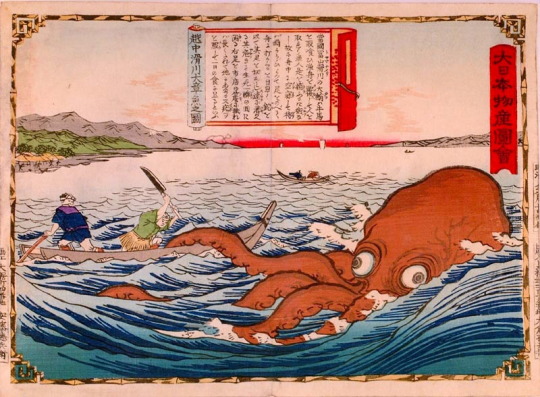
called a drawing of the Ainu folklore creature at kor kamuy/akkorokamui/アッコロカムイ one more time I'm going to go insane
This is a woodblock print by Utagawa Hiroshige III and it's titled "The giant octopus of Namekawa in Etchū Province" (越中滑川大章魚之図) as part of the series "Products of Greater Japan" (大日本物産図会)which features the production processes of regional specialities (at least according to the Chiba Prefectural Central Museum, who possesses 32 of them!)
Etchū is the old name for Toyama Prefecture, which is located here
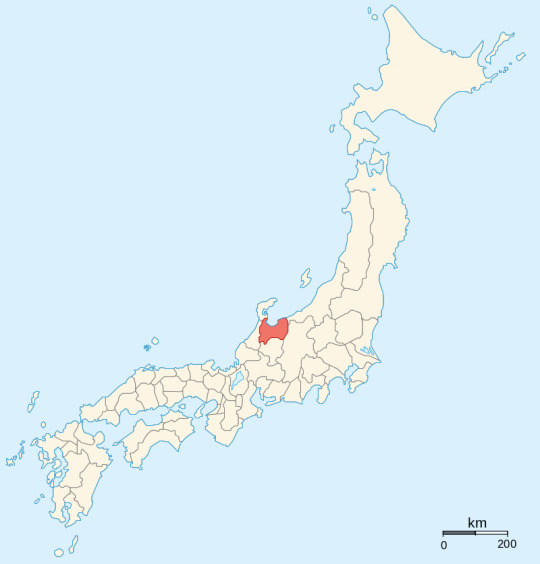
As you can see, this is nowhere near Hokkaido.
And I get it, giant octopus folklore is cool! It's part of why I was looking into it too. But it feels disingenuous to act like this print that is very distinctly and intentionally set in the central region of Japan is supposed to be a representation of Ainu folklore.
#tbf its not only foreigners doing this as I came across an example in japanese too#it just irks me#if theres an actual ainu folklore connection to this print i have yet to find it#but hey if anyone knows of anything please tell me i would love to be wrong#japanese art
3 notes
·
View notes
Text

Illustration of foreign residences and the Catholic church in Yokohama, Japan, 1870 by Utagawa Hiroshige III (x)
28 notes
·
View notes
Photo
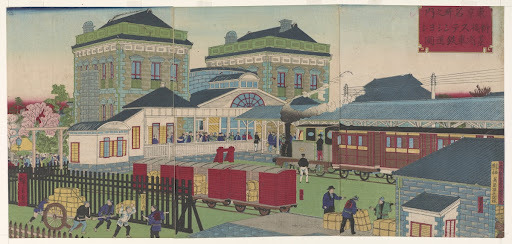
Shimbashi Railway Station - Artist: Utagawa Hiroshige III - Google Arts & Culture
2 notes
·
View notes
Photo
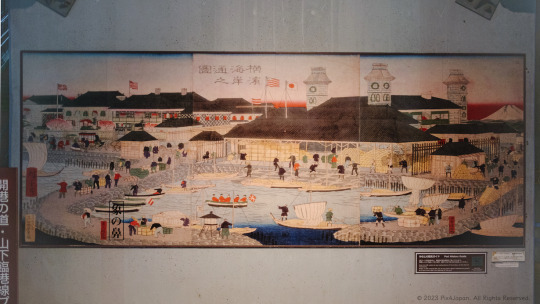
Historical Mural Under Bridge
Location: Yamashita Rinko Line Promenade, Yokohama, Japan
Timestamp: 18:50 March 15, 2023
As you make your way towards the Osanbashi Yokohama International Passenger Terminal, you will come across a beautiful mural located beneath the Yamashita Rinko Line Promenade pedestrian overpass. The artwork showcases the Port of Yokohama during the year 1870, featuring a collection of ships anchored offshore, cargo being unloaded from barges, foreign consulates, and the Japanese customs office.
It's worth noting that this mural is actually a faithful reproduction of a woodblock print originally created by Utagawa Hiroshige III and published in 1870. The original works of Hiroshige III can be found in various collections including the British Museum, Philadelphia Museum of Art, and Victoria & Albert Museum.
Fujifilm X100V (23 mm) with 5% diffusion filter
ISO 3200 for 1/170 sec. at ƒ/2.0
Classic Chrome film simulation
#ストリートスナップ#横浜#大さん橋#三代目歌川広重#濱海岸通之図#pix4japan#Fujifilm X100V#street photography#Japan#Yokohama#Osanbashi Pier#woodlblock print#ukiyo-e
5 notes
·
View notes
Text
14 December, 1702
On this day in 1702, one of the most famous episodes in Japanese history took place, an event which is now universally referred to as the Forty-Seven Rōnin Incident, also known as the Akō incident (赤穂事件 Akō liken) or Akō vendetta. https://youtu.be/b6_kbydqEuE
The 18th-century historical event refers to a band of rōnin (leaderless samurai) who avenged the death of their master, Asano Naganori, lord of Ako, who was forced to commit ritual suicide following an earlier attack on Kira Yoshinaka, in grave breach of protocol, at the shogun's court in Edo.
A noted Japanese scholar has described the tale as the best known example of the samurai code of honour, bushidō, and as the country's "national legend."
Shown here is 1926 lithograph (from my personal collection of Japanese art) - known as "The 47 Rōnin Memorial Portrait" - which shows all of the participants in the legendary attack.
There are, of course, many other depictions of the historical event in ukiyo-e form by the likes of Utagawa Toyokuni (歌川豊国; 1769– 1825), usually referred to as Toyokuni I; Katsushika Hokusai (葛飾北斎, 1760-1849), Utagawa Hiroshige (歌川 広重, 1797-1858), Utagawa Kunisada (歌川 国貞; 1786 – 1865), also known as Utagawa Toyokuni III (三代 歌川 豊国), and so on.
A number of successful films have, naturally, also been made detailing the Forty-Seven Rōnin Incident, the first of which was directed in 1912 by Makino Shozo.
For anyone in Japan who is interested in such things, it is still actually possible to make a visit to the site of the graves of the forty-seven Rōnin (四十七士 Shi-jū-shichi-shi), ranging in age from fifteen to seventy-seven, which are located at Sengaku-ji (泉岳寺), a Sōtō Zen Buddhist temple in the Takanawa neighbourhood of Minato-ku, near Sengakuji Station and Shinagawa Station, in Tokyo.

4 notes
·
View notes
Text

China pink and Eurasian tree sparrow
Hiroshige III Utagawa (1842-1894), included in Kacho Zufu (Pictures of Flowers and Birds) – Japanese flower and bird picture book published in the late 1800s.
2 notes
·
View notes
Photo
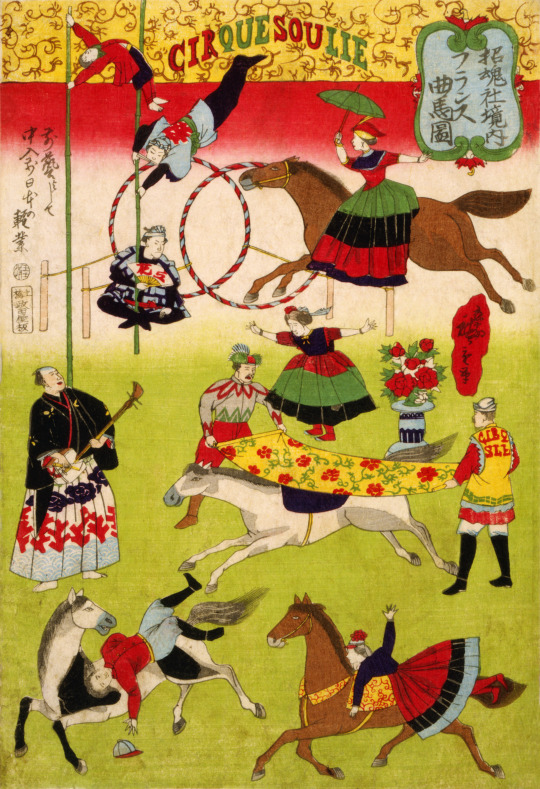
Utagawa Hiroshige III
Great French Circus on the grounds of the Shokonsha Shrine , 1871.
Utagawa Hiroshige III (歌川広重 3代目Utagawa Hiroshige sandaime ? ) , artistic pseudonym of Gotō Torakichi (後藤寅吉? ) ( 1842 or 1843 – March 28, 1894 ) was a Japanese painter and graphic artist , specializing in woodblock prints of ukiyo-e style . He is also known as Andō Tokubei (安藤徳兵? ) .
#Utagawa Hiroshige III#circus#japanese art#woodblock print#ukiyoe#japan#woodcut#japanese prints#printmaking
278 notes
·
View notes
Text


Utagawa Hiroshige III, Cherry Blossoms and Shrike // Water Hyacinth, Sandpiper and Kingfisher (1871-1873)
From Vincent van Gogh's Japanese print collection.
2K notes
·
View notes
Text

Nine pages from the book Hyakubyô gafu (Pictures of One Hundred Cats), by Utagawa Hiroshige III (1842–1894).
#ukiyo-e#woodblock print#cat#cats#neko#utagawa hiroshige#utagawa hiroshige III#Hyakubyô gafu#pictures of one hundred cats#edo
607 notes
·
View notes
Photo

Hunting the Giant Octopus of Namekawa in Etchu Province (from the series Products of Greater Japan), Hiroshige III, 1877
#art#art history#Asian art#Japan#Japanese art#East Asia#East Asian art#ukiyo-e#woodblock print#Hiroshige III#Utagawa Hiroshige III#Ando Tokubei#Utagawa School#genre painting#animals in art#octopus#octopuses#octopi#seascape#Meiji Period#Meii Restoration#19th century art#animal violence tw
227 notes
·
View notes
Video
<strong>Die Edobahsi-Brücke (The Edobashi Bridge) <a href="https://www.flickr.com/photos/hen-magonza/">by HEN-Magonza</a></strong>
#Japanischer Farbholzschnitt#Japanese woodblock print#MAK#Museum für angewandte Kunst#Frankfurt#Hessen#Hesse#Deutschland#Germany#Yokohama-Ausstellung#Yokohama Exhibition#Utagawa Hiroshige III#Frankfurt am Main
8 notes
·
View notes
